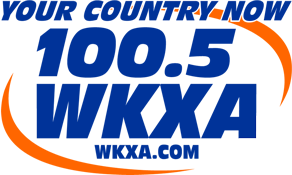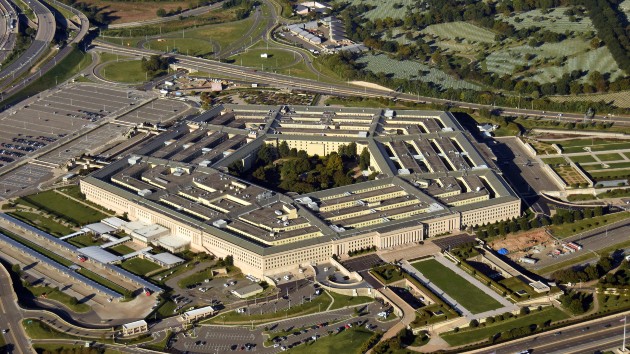Covert action and national security
Ivan Cholakov/iStockBy MICK MULROY
This paper explains covert action, the need for it to be more thoroughly integrated into the U.S. National Security Strategy, and advocates for it to be fully resourced.
Covert Action and the CIA
Covert action is a tool U.S. policymakers employ to meet U.S. national security objectives. Title 50 of the United States Code defines covert action as an activity or activities to influence political, economic, or military conditions abroad, where it is intended that the role of the United States will not be apparent or acknowledged publicly. Covert actions are the most highly classified, politically sensitive, and some of the most dangerous activities our nation undertakes. The National Security Act of 1947 established the Central Intelligence Agency (CIA) and assigned it the mission of conducting covert action on behalf of the United States, thereby continuing the legacy inherited from its World War II-era predecessor, the Office of Strategic Services (OSS). The OSS was a U.S. military organization but had semi-autonomous status and direct access to the President. Officers of the OSS carried out human intelligence, influence, and paramilitary operations. Paramilitary operations were conducted by the legendary Jedburgh Teams and Operations Groups (small teams built to operate behind enemy lines with little or no support). The paramilitary component of the CIA is the direct descendant of these teams and groups.
Nearly four decades after the CIA was established, President Ronald Reagan reinforced its primacy in the covert world with executive order 12333 in 1984 (as did several Intelligence Authorization Act provisions and Section 3093 of Title 50). The US government conducted a study on who was best to conduct covert paramilitary operations and found that the CIA should be the sole government agency conducting covert action, and this was confirmed by the President.
Paramilitary and influence operations are the two main components of covert action. These are also referred to as special activities. Covert actions are carried out by many CIA elements with support and direction from the Special Activities Center (SAC). SAC is responsible for maintaining the infrastructure and personnel necessary to conduct covert action missions.
Covert action is deniable by the U.S. government and, by extension, our partners and allies. Clandestine operations conducted by the CIA and the Department of Defense (DoD) are intended to hide the identity of who performed the activities. But clandestine operations are not legally deniable.
Deniability changes political calculations. For the United States, the disclosure of the overt and attributable presence in conflict or denied areas is a sensitive issue. It can negatively impact the pursuit of U.S. national security objectives. The presence of forces operating under the CIA is kept secret by the United States and its partners worldwide.
Covert and clandestine operations conducted under Title 50 authorities require small, highly adaptable teams of people rather than large and conspicuous military units.
Operating in denied areas with these small teams is inherently risky, but these risks are weighed carefully when covert action authorities are given.
The President of the United States writes findings to authorize and direct the CIA to conduct covert action. This fact is often overlooked by CIA detractors, many of whom blame the CIA for policies and activities that they disagree with politically. The President has the authority to start and stop any covert action at any time and is responsible for the policy, just like diplomatic efforts or military operations.
Congressional Oversight
Congress also plays a critical oversight and resourcing role in covert action. Section 3091 of Title 50 requires the President to keep congressional intelligence oversight committees fully and currently informed of intelligence activities, including covert actions. The elected representatives of the American people scrutinize the operations, expenses, and the effectiveness of these programs. This vital function developed over time and is now very much a part of U.S. covert activities. Effective and developed oversight is one reason why covert action remains under the CIA’s purview.
Measures of Effectiveness
Since the CIA was established in 1947, it has run many publicized, not-so-well publicized, and still secret covert operations. CIA officers undertook the first covert action against North Korea in the Korean War. Over the following decades, the agency conducted covert action in Laos, Vietnam, Cuba, Angola, Afghanistan, Iraq, Pakistan, Syria, Somalia, Libya, Yemen, and many other parts of the world. While some programs have been very successful and others less so, the CIA, like any professional organization, has shown a commitment to learning from past actions to adapt and improve.
The key to successes like these is to develop and assess objective measures of effectiveness (MOE) for each program and adjust them based on the assessment’s findings. This MOE assessment is something that is done regularly during current operations. It is, after all, more important to adjust a program that needs adjustment while it is being executed, rather than wait until completion.
The CIA publishes the Case Studies Intelligence as a full review of past operations. These case studies take a detailed look at covert action programs through the lens of history and the benefit of time. These retrospective views are invaluable to improving capabilities, identifying actions that added to the overall effort and actions that detracted from it. As programs are declassified over time, it is also essential that our actions, be they overt or covert, be published after the declassification period has expired as an added safeguard to ensure that they reflect our society’s values (media stories often portray partner operations conducted in a negative light. More often than not these stories are untrue and would require an entire generation of paramilitary and military personnel to ignore the alleged human rights violations reported. It is difficult to defend unacknowledged programs. History, however, will prove those reports are not true.).
Inter-agency Cooperation and Support
The CIA collaborates with many departments and agencies of the U.S. government in a set of processes and forums typically referred to as the interagency. This includes and most commonly refers to the Department of State, the Department of Defense, the Director of National Intelligence, and other U.S. Government agencies, as required.
The CIA has a strong and close relationship with DoD, and particularly with U.S. Special Operations Command. That close working relationship was essential to many successes after 9/11, including support to Northern Alliance in Afghanistan to topple the Taliban; the locating and killing of Osama bin Ladin; the partnership with Kurdish Peshmerga in Iraq to defeat the terrorist organization Ansar Al-Islam (precursor to Al-Qaeda in Iraq) and take on and defeat Saddam Hussein’s conventional forces at the beginning of the Iraq War; and the locating and killing of Abu Bakr Al-Baghdadi, the former head of the Islamic State, and many more known and unknown examples.
Per media reporting, there is an ongoing review of DoD assets that are detailed to the CIA. Although limited by DoD standards, these resources are significant to many ongoing CIA operations in counter-terrorism and other areas. This cooperative effort has had a substantial positive impact on U.S. national security and should continue. If not, the CIA should be increased in personnel and budget to make up for the withdrawal of these assets.
The CIA’s covert action infrastructure (CAI) capabilities should also be fully funded to ensure they can execute the mission they are given and do not have to rebuild them in the next crisis. This Covert Action Fund within the CIA should be sufficient to operate all CAI capabilities within SAC and separate them from the operating budget to perform intelligence collection in the mission centers. This fund should consider the increased role the CIA will play in counter-terrorism, as DoD shifts to the higher priorities as described in the current National Security Strategy. CIA covert action will also shift to these higher objectives of great powers competition and rogue state actors.
Nation Security Strategy
The 2017 National Security Strategy was an inter-agency product that characterized the world according to revisionist powers. The 2018 National Defense Strategy that came from it placed the global power competitors of China and Russia as the top priorities. The rogue state actors of North Korea and Iran followed by counter-terrorism. These are the correct priorities based on their actual comprehensive threat to the country and the significance they present to the future political, economic, and security well-being of the United States. As a result, all departments and agencies should adjust their efforts and resources to reflect this policy decision.
The Irregular Warfare Annex to the National Defense Strategy called for the capabilities that the U.S. developed in irregular warfare during the war on terrorism to be shifted to the higher priorities of the NDS of rogue state actors and great-power competitors. This will, of course, require adjustments as many of those capabilities are direct action and will not be used often in the absence of war against great power competitors, but they may against rogue state actors. More importantly, the adaptation and ingenuity developed over the last couple of decades need to be focused on all our adversaries. This Annex also calls on the entire joint force to be involved in the effort and not just U.S. military special operations.
In addition to the Irregular Warfare Annex that focuses on the irregular warfare capability in the DoD, there should be a Covert Action Annex to the National Security Strategy. Too often, covert action has been used to make up for the lack of a coherent national security policy and as a last-ditch effort to do something about a problem that was too difficult for our other pillars of national power to tackle. This is not an effective way to use covert action. The most effective way is to support a comprehensive policy in which each pillar has a defined role in working toward a national objective.
Conclusion
Covert action is evaluated, assessed for its effectiveness, and overseen by congress. It should be fully funded, allowing all CAI elements to operate separately from foreign intelligence collection and analysis. The United States should also create a stand-alone but fully integrated annex to the National Security Strategy that defines where covert action will contribute.
There are many tools U.S. national security policymakers can use to meet their objectives; covert action is only one of them. Although they are often overdramatized in media and entertainment, misrepresented by critics who understand the difficulty in defending actions that cannot be acknowledged, they play an essential role in the nation’s defense.
Countless CIA officers have served under great hardship carrying out a covert action; some gave the ultimate sacrifice. Through these times, they have developed expertise that cannot be easily duplicated. Their skills and professionalism should be fully applied to all of the problems facing the United States.
Michael “Mick” Patrick Mulroy is a former Deputy Assistant Secretary of Defense for the Middle East, a retired Paramilitary Operations Officer in the CIA’s Special Activities Center, and a retired U.S. Marine. He is a Senior Fellow for National Security and Defense Policy with the Middle East Institute, a National Security Analyst for ABC News, and the Lobo Institute’s Co-founder.
Copyright © 2021, ABC Audio. All rights reserved.

